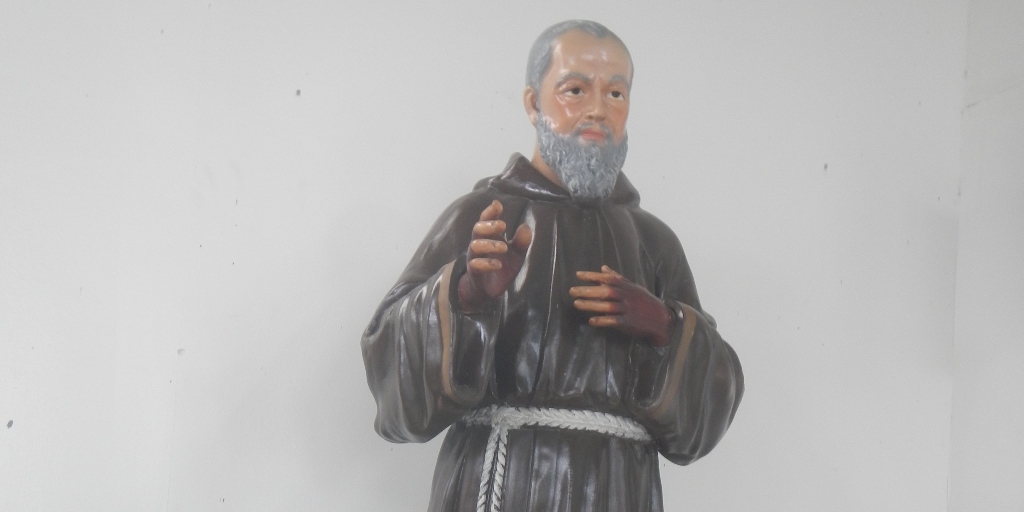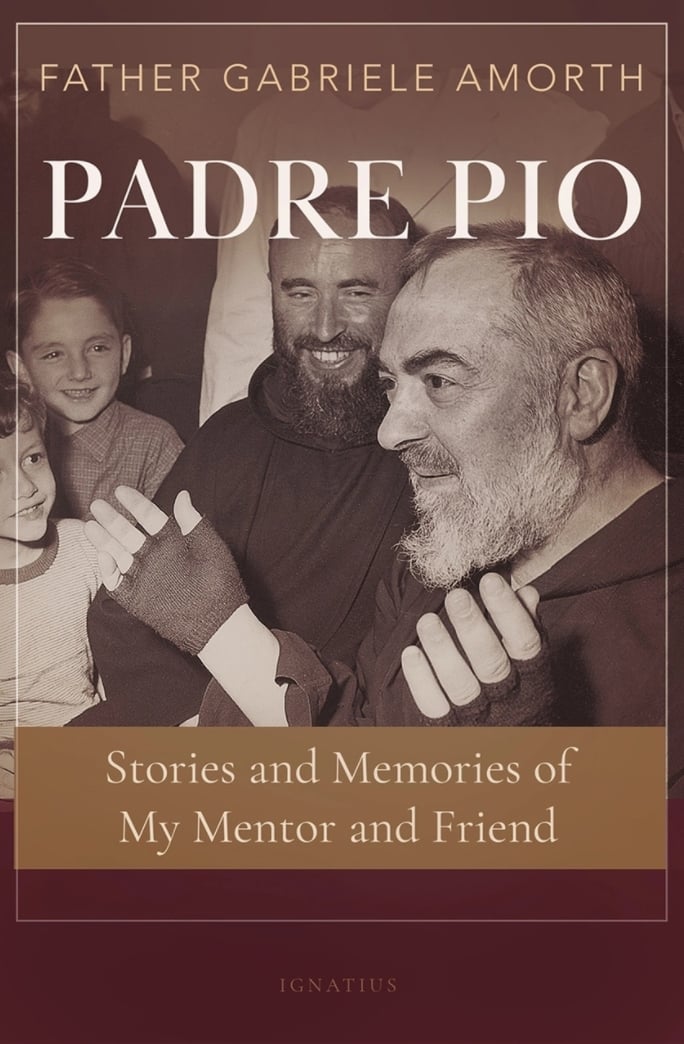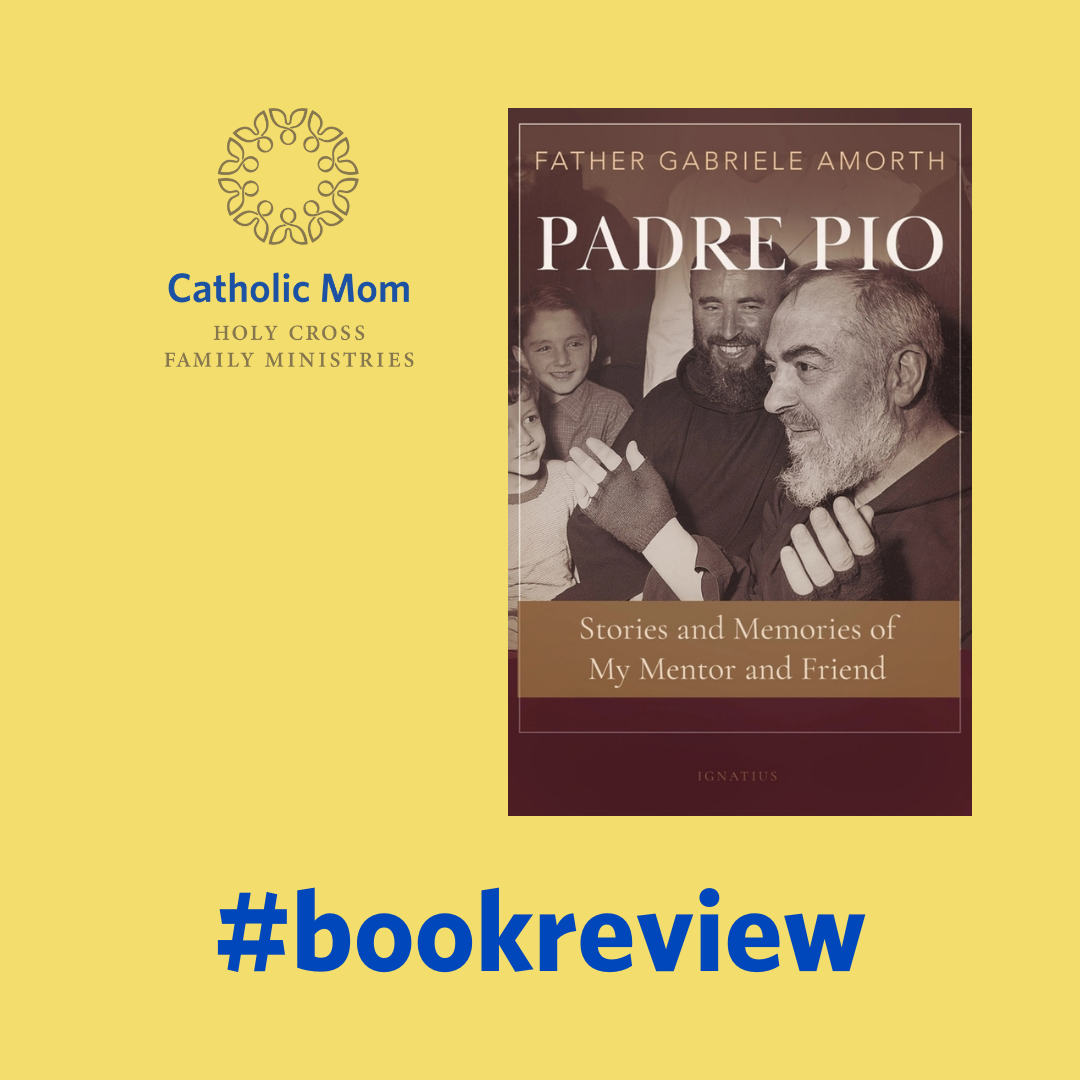
As she read a book by a friend of Padre Pio, Jasmine Kuzner noticed how real truth can be seen in the way a loved one speaks about their friend.
In the preface of Padre Pio: Stories and Memories of My Mentor and Friend, Fr. Gabriel Amorth starts with a confession:
I’ll be honest … I really don’t think I have anything new to say, nothing that hasn’t already been said. But if this can be a small contribution to spreading the word about a great saint and enticing people to read other books about him, and above all his own writings, I’ll gladly gird up for the job.
I have always understood the interest many have had in Padre Pio. After all, what Catholic would not be curious to know more about a soul who received a stigmata from our Lord? That said, this chance to review Padre Pio: Stories and Memories of My Mentor and Friend (new from Ignatius Press) is the first time I’ve spent more than a few minutes in getting to know him, and after finishing it I can say that I am enticed to do exactly what was intended: to learn more about this legendary saint.

A short and easy read, Fr. Amorth’s book piqued my interest not just because of who it was about but also because of who wrote it. A remarkable priest in his own right, Fr. Amorth was the Vatican’s chief exorcist and a spiritual son of Padre Pio. While personal stories from souls like these can’t help but be full of jaw-dropping details of mystical events, what is most surprising about the book is that these details become mere background when Fr. Amorth shares what he knows.
The glory of this book, as well as its most heart-breaking moments, comes from the fact that Fr. Amorth was Padre Pio’s brother priest and friend. Fr. Amorth’s intimate knowledge of a priest’s daily grind allows him to illuminate Padre Pio as he was truly seen by those in his inner circle: a poor Capuchin priest who was devoted to his spiritual children and slaying the devil who would otherwise crush them in his grip.
Fr. Amorth starts with a brief synopsis of Padre Pio’s humble beginnings in Pietrelcina. The son of two hard-working, illiterate parents, Padre Pio was, as Fr. Amorth is sure to note, “already different.” An obedient child, Franceso (as Padre Pio was christened) had an insatiable love for God and prayer. At the age of four, Francesco was “favored with heavenly visions and already had to fight against the devil, who often made himself visible in obsessive and frightening ways.” Most terrifying to Francesco was the image of a towering giant, “a horrible man who was so tall his head was in the clouds.” Upon encountering this giant, a radiant figure appeared to Francesco and told him that it was his life’s purpose to fight off this formidable monster. He assured Francesco that the giant would always be defeated but also warned him that he would have to endure much with great conviction and courage in order to ensure victory.
For Padre Pio, the enemy came in all shapes and sizes. Fr. Amorth spends the rest of his book describing how Padre Pio fought the enemy by simply carrying out the duties he had as a priest. The devil came for Padre Pio in ugly and horrible forms. At times, he came through confusing challenges in his assignments as a Franciscan friar. He sometimes came for Padre Pio in the confessional through the sins of his spiritual children. Often, he tormented Padre Pio with great despair and isolation when authority figures or those whom Padre Pio loved delivered harsh reprimand or doubted his vocation, the most severe punishment of all - the suspension of his duty to say Mass and offer Confession. Finally, the devil came to Padre Pio in images that he least expected.
When the devil tried to “trick Padre Pio by appearing in sacred forms or in the forms of persons who had authority over him … Padre Pio had learned a rule of discernment that he then suggested to some of his spiritual children,” instilling in him a habit of always handing over every gift and piece of wisdom that was hard won in spiritual battle. By emphasizing Padre Pio’s fervent commitment to his spiritual children in every recollection, Fr. Amorth reveals a truth about Padre Pio’s sainthood: his heroic virtues were not won because of the cunning and greatness of his adversary, or even by the rarity of his stigmata and other holy gifts. Instead, Padre Pio won sainthood through pure and simple dedication to his vocation as a loving father who shared everything he had with all those entrusted to him.
“Spreading the word” about Padre Pio can at first seem an unnecessary plight. Several books have been written about him and as a modern day saint his writings are easily accessible. Anyone who can type the name “Padre Pio” into a search engine will be blessed with a hefty return of information about this unusual and blessed man. Knowing about him, however, is different from knowing something real about him, and common wisdom teaches us that the real truth can be seen in the way friends speak about their loved ones.
While it may be true that Fr. Amorth did as he promised and added nothing new to the conversation on Padre Pio, he certainly provides us with real accounts of a day in the life of his friend through Padre Pio: Stories and Memories of My Mentor and Friend. In this way, Fr. Amorth goes a step beyond inciting a reader to know more about Padre Pio and teaches a valuable lesson: it is exactly when we think we’ve learned everything we need to know about something or someone that is the precise and perfect moment for God to send us more.

Copyright 2022 Jasmine Kuzner
Image: Judgefloro, CC0, via Wikimedia Commons
About the Author

Jasmine Kuzner
Jasmine Kuzner is a wife and mother to two beautiful, quick-witted children, and is the Director of Religious Education at Saint Bernadette Church in Silver Spring, MD. She is also a consultant for the Saint John Paul II National Shrine. She holds an M.F.A. from the University of Maryland, College Park, and has been published in Humanum Review, Busted Halo, and Catholic Mom.


.png?width=1806&height=731&name=CatholicMom_hcfm_logo1_pos_871c_2728c%20(002).png)
Comments